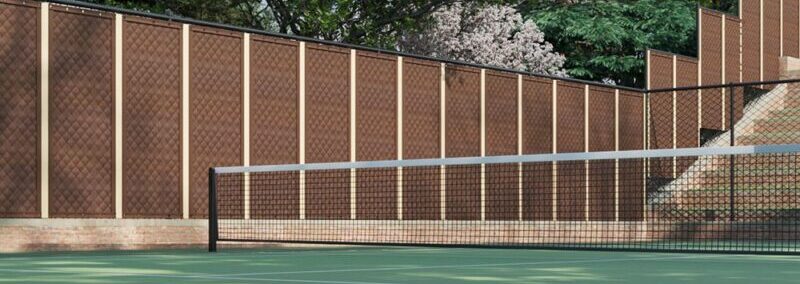
How to Soundproof a Room
Estimated reading time: 9 minutes
Table of contents
Creating a quiet and peaceful environment within your living or working space is a goal we all strive for. Soundproofing a room is a crucial step towards achieving this, as it helps in reducing unwanted noise, enhancing privacy, and providing a conducive atmosphere for concentration and relaxation. In this comprehensive guide, we’ll explore the art of soundproofing a room, the best materials to use, and products to avoid.
Soundproofing a Room 101
Before we dive into the specifics of soundproofing a room, it’s vital to understand what soundproofing entails and why it’s so essential.
Common Areas where Noise Travels Through
Soundproofing is the process of minimizing the transfer of sound from one space to another, or from outside to inside a room. This helps maintain privacy, reduce disturbances from neighboring areas, and create a more comfortable and peaceful environment. Whether it’s your home, office, recording studio, or any other space, effective soundproofing can significantly improve productivity and quality of life.
When soundproofing a room it is important to understand the common areas that noise easily travels through. This will help you make informed decision on whether you need to treat a particular area over another. We’ll go over how to soundproof each of these areas.
Walls – Generally consisting of studs and drywall, common wall partitions often don’t have enough mass to block enough noise as some would like.
Ceilings – Most often in commercial and office applications with drop ceiling tiles, if there is an open plenum, noise can easily travel above ceilings.
Doors – Common architectural doors are notorious for letting sound through. If they have gaps at the bottom of the door or jambs, they are letting sound through. Additionally, hollow-core doors generally don’t have enough mass to block all noise. Solid doors or acoustically rated doors may be solutions.
Windows – Single Pane glass windows do not have enough mass to block an ample amount of noise.
Soundproofing a Wall

When soundproofing a wall or anything for that matter, the main principle lies within the “Mass Law.” Simply explained, the mass law states that the denser a material, the more noise it will block. So to truly soundproof a room we can add mass to the walls and/or come up with creative ways to “cheat” the mass law.
Recommended Methods When Studs are Exposed
Adding Mass – Adding a high density material such as Mass Loaded Vinyl Noise Barrier (MLV) can greatly reduce the sound transmission between rooms. MLV is a flexible material that generally weighs up to 2lbs per square foot with a 1lb barrier being the most common. And it is only 1/8in thick so it can save space. It’s one of the most popular soundproofing products available. MLV is easily installed directly over studs or existing drywall. Check out our DIY guide on MLV.
Sound Isolation Systems – Another effective soundproofing method is to isolate walls using various clips. Essentially creating a “floating” wall with no common studs between rooms, you are able to heavily reduce noise transmission. There is a variety of isolation products on the market, contact us to learn about the best option.
Soundproof Insulation – Though insulation generally doesn’t offer much when it comes to mass, it does provide some sound absorption in addition to an R-value. Adding specialized soundproof insulation in walls will help absorb sound while in the cavity before it can get to an adjacent room.
Common but More Traditional Methods
Staggered Stud Walls – Standard wall construction will have a single stud where drywall can be installed on both sides. This creates an area for vibrations and sound to travel. With staggered stud walls you would use a larger base plate, such as a 2×6 and smaller studs, such as 2x4s and stagger them for each room. While this reduces noise transfer, it does take up some additional space.
Double Walls – Generally used in areas that require extremely high amounts of privacy for confidential information or audio recording. When used with other soundproofing methods, creating a double wall provide complete soundproofing of a room. Mainly because there is so much mass built in to the two independent walls.
Resilient Channels – Resilient Channels are a spring metal track used to isolate drywall from studs and other construction. It is more of an obsolete method now that we have a variety of sound isolation clips. Resilient Channels can be difficult to install and easy to break. A single nail or screw going into the wrong part of the channel can shock the system making it ineffective.
Fiberglass Batts and Foam – These materials are generally ineffective at blocking sound without use of other methods. Fiberglass Batts and Foam are lightweight and designed to absorb more sound than block it. When it is inside drywall it does not accomplish a lot of sound absorbing.
How to Soundproof an Existing Wall
Soundproofing an existing wall can be a simple process depending on what your overall goals are. If you aren’t concerned with making your room a little smaller, you can easily install Mass Loaded Vinyl Noise Barrier (MLV) over existing drywall, then add another layer of drywall. This would give you a wall with ample mass with estimated STC 50+.
If you don’t want to lose space in your room, you can always take down the existing drywall, add insulation and MLV to the cavity and studs, then add new drywall either directly over the MLV or using isolation clips.
Soundproofing a Room Ceiling

Soundproofing a room’s ceiling is similar to soundproofing a wall. Adding mass to a ceiling can reduce the airborne noise heard from above. But we also have to consider impact noise, being sounds of people walking, objects fallings, etc.
Footfall/Impact Noise
Impact Noise is what is created from vibrations and impact on surfaces. It is one of the most common complaints in apartment buildings and places with multi-level activities. Many people think they can solve impact noise by treating a ceiling, but the reality is the only way to treat it is at the floor above.
Treating Impact Noise
To treat impact noise, it is recommended to use an acoustical floor underlayment. There are specialty products designed to be used under specific finished flooring. These underpayments absorb impact and reduce the amount of vibrations that travel below. Other cost effective and simple things that can help is adding rugs or carpet to a floor.
Ceiling Grid and Drop Ceiling Soundproofing
Ceiling Grid’s and drop ceilings can be a common areas for noise to travel through and a key area when soundproofing a room. Typically ceiling tiles are designed to absorb sound and improve sound quality in a room rather than block it. In many grid applications, if there is a shared plenum between two or more rooms over the grid, it creates a path for sound to travel.
Specialty Ceiling tiles with a noise barrier backing can replace traditional ceiling tiles in these applications. Or rather than purchasing new ceiling tiles, a Noise Barrier Ceiling Tile Cover can be made to fit over existing tiles to block noise from traveling in the plenum.
Another method in these types of applications is the use of Sound Masking technology. Speakers can be installed within the plenum or directly into ceiling tiles to create a “cover” for the noise and muffle out any noises or conversations.
Soundproofing a Room’s Doors

Doors are an extremely common area of soundproofing a room where noise enters and escapes. It is also in our opinion to simplest problem to solve. Doors are notorious for having gaps at the floor and around the jambs which lets sound through. It’s amazing the difference sealing these gaps can make when you treat a door.
Treating an Existing Door
An acoustical treatment for an existing door in an excellent way to reduce sound transmission. An acoustical door treatment consists of of two main parts, an operable door bottom and jamb and header seals. There are various qualities and makes for these types of products.
The operable door bottom is a mechanical piece that can be installed on the face of a door or mortised within it. When the door is closed the door bottom releases a rubber gasket to the floor and created a tight seal so noise can’t escape.
The perimeter seals are installed on the door jambs and header to ensure when the door is closed that there is a tight seal. Think glorified weather stripping. Perimeter seals can be fixed or adjustable depending on the need.
New Acoustic Doors
If you’re going the route of replacing doors because you think your door is too lightweight to block noise, there are a variety of acoustic doors available. Acoustic doors are available in a range of STC ratings, sizes, and finishes. They commonly come with cam-lift hinges which lift and drop the door to the ground in order to create a tight seal when opening and closing. These types of acoustic doors can be expensive. Many people will opt for a higher quality consumer grade solid door and an acoustic treatment in order to achieve their needs.
Soundproofing a Room’s Windows

Soundproofing a window is a crucial step in creating a tranquil and comfortable living or working space, especially in urban environments where external noise can be a constant challenge. Windows are vulnerable points for sound transmission, but with the right techniques, you can significantly reduce the impact of unwanted noise.
One effective method for soundproofing windows is the installation of double-glazed windows. Double-glazing involves having two panes of glass with a gap in between, creating an additional layer that helps insulate against sound. The gap acts as a buffer, reducing the transmission of sound waves from the outside to the inside of the room. This method is particularly effective in blocking traffic noise and other outdoor disturbances.
For a more budget-friendly option, consider using removable window inserts made of soundproofing materials. These inserts, often made of dense foam, additional glass, or other sound-absorbing materials, can be easily installed and removed as needed. They act as a barrier against sound waves, helping to minimize noise infiltration through the window.
Applying weatherstripping to the window frame is another practical approach. Weatherstripping helps create an airtight seal, preventing sound leaks through gaps and cracks. This method is not only effective in reducing noise but also provides additional insulation, contributing to energy efficiency.
Thick curtains or drapes made of heavy, dense fabric can also play a significant role in soundproofing windows. The fabric absorbs sound waves and prevents them from entering the room. Choosing curtains with multiple layers or using double-layered curtains can enhance their noise-reducing properties. Additionally, ensuring that the curtains extend beyond the window frame and touch the walls on either side can create a more effective sound barrier.
-
April 11, 2024
Acoustic Improvements at Provincetown Public Library
-
November 16, 2023
How to Soundproof a Room
-
September 26, 2023
Quieting the Racket: Understanding Pickleball Noise and Effective Solutions



